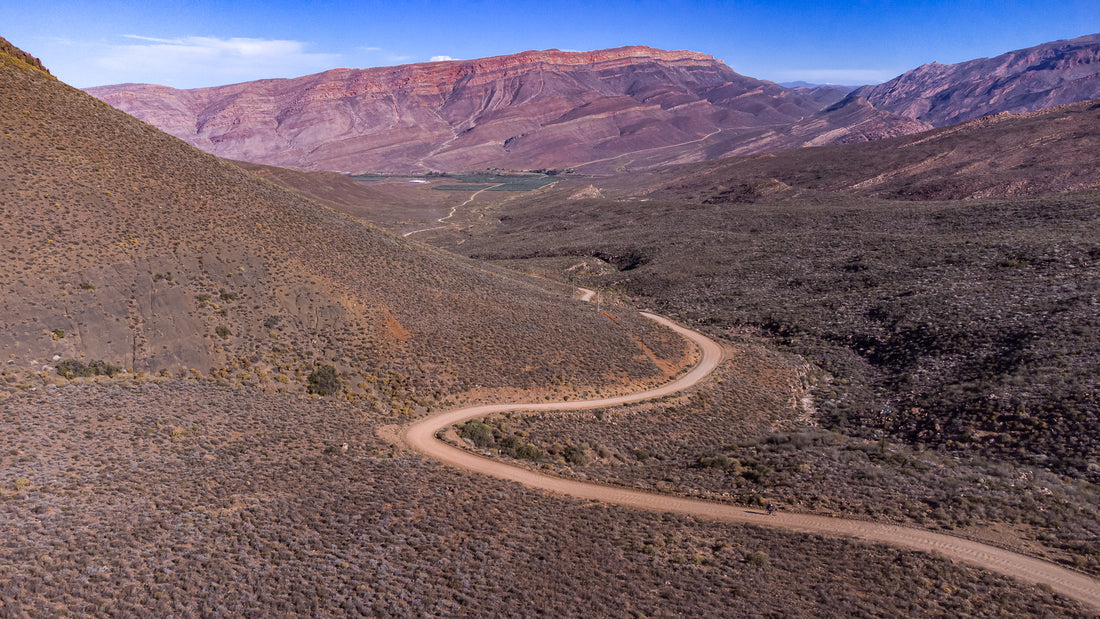The Rhino Run, is a 2,800 km unsupported off-road race across South Africa and Namibia, created by Ryan Flinn with the support of Jesse Carlsson. The inaugural edition was due to run in 2020. Alas, covid struck, borders closed, and the race was postponed till 2021. Things didn’t improve this year, so once again, the race was postponed till 2022.
In October this year, Dutch cyclist, Bas Rotgans, reached out to me asking what the conditions in South Africa were and if it was safe to travel through. Bas was itching for one more ultra tour before winter arrived in Europe. Unfortunately, his window was small due to work and family commitments leaving us only nine days to ride. Our goal was to see how far we could travel the Rhino Run route in nine days without racing it. Bas then reached out to a mate, Max Riese, from Austria, to see if he would join us. Pretty soon, flights were booked, and our exciting ride preparations began.

The first 750 km of the Rhino Run is based on the Cross Cape Route. It is wonderfully scenic, features lush coastline forests, desert stretches, then extensive lush farmlands as you approach Cape Town. After a long commute from Bas and Max’s home countries, we decided a slightly shorter, gentle day one was best. An 80 km ride from the start in Plettenberg Bay to one of my favourite towns in South Africa, Knysna. The Rhino Run takes riders through the Knysna Forests, some of the most beautiful indigenous forests in South Africa, which had elephants roaming freely once upon a time.



The Rhino Run route is mostly gravel for the first 600 km, with a few short tar stretches between long gravel roads for good measure. Then it’s a long 200 km section of tar before the gravel returns upon reaching the gorgeous Cederberg. This sealed stretch is the longest tar stretch, passing through towns with heavy traffic at times, but there are some fantastic views to keep you distracted and alert.
Not having ridden overseas often, I don’t have much to compare to the Rhino Run. However, the rougher sections on the route were met with comments from Max and Bas over how rough the surface was! Both have completed the Silk Road and Atlas Mountain Race, so it’s safe to say that South Africa has some pretty gnarly gravel roads!
After five days of riding the first gravel and tar stretch and a solid 10,000 m of climbing, we arrived at Wellington, a small town at the base of the Bainskloof Pass. We would tackle the 18 km climb the next day, with a big push to reach the Cederberg. Bas, Max, Bas, and I hit the road early to start a long day that included five mountain passes. Unfortunately, when we got to the base of Bainskloof Pass, we were saddened to see the Pass was closed. With our “best” option around on a hazardous road, we made the safety decision to get a lift to the infamous Tankwa Karoo. Our tour on the Rhino Run route so far came to a halt here, a reminder that sometimes plans can change, and sometimes you need to look elsewhere for the next adventure. Meanwhile, I was very excited to show Bas and Max my favourite place on earth, the Tankwa Karoo.


We were next hit with the news that covid cases were rising very fast in Austria, which meant Max had to be tested to fly back to Salzburg. Getting back to Cape Town in time for this to happen meant cutting our trip shorter, leaving us just one full day of riding left. So I made sure that it would be the best day of riding ever!
We began our final day of riding at the edge of the Tankwa Karoo National Park, making our way to the Tankwa Padstal (roadside restaurant) for some Roosterkoek - a type of bread made on an open flame, a South African legend! Upon leaving the Padstal, we started the ride over the monster of a pass named Katbakkies Pass. The decisively steep Katbakkies Pass traces over what was once an old sheep-trekking route over the Skurweberge mountains. It joins the Koue Bokkeveld with the Ceres Karoo and Tankwa Karoo, and peaks at 1200 m elevation. It is also said that its rock formations resemble a cat's face. Unfortunately, I’ve yet to see it!?



Once over Katbakkies Pass, you are back in the Cederberg, rejoining the Rhino Run route. The Cederberg, in my opinion, is brutal cycling. It will be one of the most challenging sections of the Rhino Run. It is filled with heavily corrugated roads, soft sand, strong winds, and incredibly tough climbs. It isn’t a very long section, just shy of 100 km, but it will physically and mentally test riders. We finished our final day at the legendary Cederberg Oasis, a great sleep spot with a restaurant that makes fantastic meals. A real oasis set in a mountain landscape.

The short tour of the Rhino Run route made an impact on me in two ways. Firstly it made me excited for when the race can happen. It will be an exceptional ride; the amount of different terrains and surrounds you ride through is mind-blowing. Even for me, after so many years of riding in South Africa. The second is that it scared the cr*p out of me. There is no denying it. This race will be hard! CRAZY HARD! Many will come here and underestimate just how challenging it will be. If you are looking for a real challenge that very few places in the world can offer, then the Rhino Run is it. It is equally rewarding as hard as it is, and you will be treated to views and experiences that you didn’t think possible. It gives as much as it takes.

